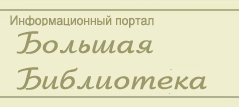Другое : Eyck, Jan van: portraits
Eyck, Jan van: portraits
Eyck, Jan van: portraits
This
title has traditionally been given to this painting because it was thought to
be a form of ``wedding certificate'' for Giovanni Arnolfini and Giovanna
Cenami, who married in Bruges in 1434. He was an Italian merchant, she the
daughter of an Italian merchant. Their grave, youthful faces both have a lovely
responsability that is typical of van Eyck.
Van
Eyck's art reached perhaps its greatest triumph in the painting of portraits.
One of his most famous portraits is The betrothal of the Arnolfini,
which represents an Italian merchant, Giovanni Arnolfini, who had come to the
Netherlands on business, with his bride Jeanne de Chenany. In its own way it
was as new and as revolutionary as Donatello's or Masaccio's work in Italy. A
simple corner of the real world had suddenly been fixed on to a panel as if by magic.
Here it all was - the carpet and the slippers, the rosary on the wall, the
little brush beside the bed, and the fruit on the window-sill. It is as if we
could pay a visit to the Arnolfini in their house. The picture probably
represents a solemn moment in their lives - their betrothal. The young woman
has just put her right hand into Arnolfini's left and he is about to put his
own right hand into hers as a solemn token of their union. Probably the painter
was asked to record this important moment as a witness, just as a notary might
be asked to declare that he has been present at a similar solemn act. This
would explain why the master has put his name in a prominent position on the
picture with the Latin words 'Johannes de eyck fuit hic' (Jan van Eyck was
here). In the mirror at the back of the room we see the whole scene reflected
from behind, and there, so it seems, we also see the image of the painter and
witness. We do not know whether it was the Italian merchant or the northern
artist who conceived the idea of making this use of the new kind of painting,
which may be compared to the legal use of a photograph, properly endorsed by a
witness. But whoever it was that originated this idea, he had certainly been
quick to understand the tremendous possibilities which lay in Van Eyck's new
way of painting. For the first time in history the artist became the perfect
eye-witness in the truest sense of the term.
From top to bottom: Symbolic candle
The
solitary flame burning in bright daylight can be interpreted as the bridall
candle, or God's all-seeing eye, or simply as a devotional candle. Another
symbol is St Margaret (the patron saint of women in childbirth), whose image is
carved on the high chairback.
An elaborate signature
As
today, marriages in 15th-century Flanders could take place privately rather
than in church. Van Eyck's Latin signature, in the Gothic calligraphy used for
legal documents, reads: ``Jan van Eyck was present'', and has been interpreted
by some as an indication that the artist himself served as a witness.
Convex mirror
The
mirror is painted with almost miraculous skill. Its carved frame is inset with
ten miniature medallions depicting scenes from the life of Christ. Yet more
remarkable is the mirror's reflection, which includes van Eyck's own tiny
self-portrait, accompanied by another man who may have been the official
witness to the ceremony.
Symbol of faithfulness
Almost
every detail can be interpreted as a symbol. The companion dog is seen as a
symbol of faithfulness and love. The fruits on the window ledge probably stand
for fertility and our fall from Paradise. Even the discarded shoes are not
thought to be incidental, but to signify the sanctity of marriage.
Список
литературы
Для подготовки данной работы
были использованы материалы с сайта http://www.ibiblio.org/louvre/paint/
|


